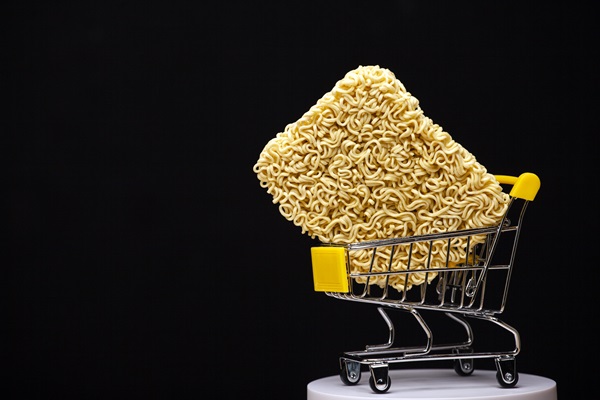.png)

Krishnadevan is Consulting Editor at BasisPoint Insight. He has worked in the equity markets, and been a journalist at ET, AFX News, Reuters TV and Cogencis.
April 25, 2025 at 12:53 PM IST
Food-focused FMCG companies are pulling ahead of their personal care peers, with the recent quarterly results of Nestle India and Hindustan Unilever making the divergence unmistakable. Nestle’s robust food-led growth and HUL’s mixed performance highlight a structural shift in India’s consumer goods landscape: food is now driving the sector’s momentum, while personal care and home products face the limits of maturity.
Nestle India’s domestic sales topped ₹52.3 billion in January-March, the highest in any quarter and a rise of over 4% year-on-year. The company’s net profit stood at ₹8.85 billion. This rise was powered by double-digit growth in Nescafe coffee and KitKat confectionery, and with Maggi noodles, resuming strong volume gains.
Nestle’s outperformance is rooted in relentless innovation and rural expansion. Since 2015, the company has launched over 150 new products, now accounting for 7% of sales. Its “RUrban” strategy has extended Nestle’s presence to more than 208,000 villages, with rural distribution touchpoints rising to 27,730.
Quick commerce and e-commerce channels are also reshaping the business, with digital sales contributing 8.5% of the domestic turnover. Despite inflation in key inputs like coffee, cocoa, and milk, Nestle has managed to defend its margins and continue investing in capacity and supply chain resilience. Its pet-care and dairy businesses are also registering high double-digit growth and a new ₹9-billion factory in Odisha is set to further boost its foods portfolio.
HUL’s food business, in contrast, is grappling with category-specific headwinds. While tea and coffee managed growth with pricing and double-digit volumes, nutrition drinks like Horlicks and Boost struggled due to changes in pack pricing and broader category pressures. Packaged foods such as ketchup, mayonnaise, international cuisines, and ice cream were bright spots, delivering mid-single and double-digit volume growth, respectively, thanks to new launches and innovation.
The soap-to-ice cream maker is trying to innovate rapidly by introducing new products in mayonnaise, ready-to-drink coffee, and premium ice cream flavours to tap emerging demand. The company is also spinning off its ice cream business, a move to sharpen focus within foods and unlock shareholder value.
Although ice cream is a high-growth category, it currently contributes just 3% to HUL’s turnover. Realising its potential would require a significant, targeted investment that can be effectively deployed in larger categories within HUL’s broader food strategy.
Snack Supremacy
The numbers from HUL and Nestle India underscore a developing structural divide.
Nestle’s food-centric portfolio is reaping the benefits of underpenetrated categories, evolving consumption habits, and successful innovation. Its beverages and confectionery lines are expanding rapidly, and prepared foods continue to find new consumers in both urban and rural markets.
HUL’s traditional strengths in soaps, detergents, and personal care are showing the limits of market maturity. High penetration and price competition are making volume-led growth harder to achieve, forcing the company to rely on premiumisation and new formats for incremental gains.
Even within HUL, the food segment, despite short-term challenges, is positioned for long-term growth as the packaged food market expands and the company shifts towards more premium, contemporary offerings.
Still, both companies see reasons for optimism.
Nestle will continue to invest in capacity, innovation, and rural reach, betting on these pillars to sustain growth. HUL is working on product portfolio changes and high-growth categories, focusing on local relevance, premiumisation, and rapid innovation under its “India for India” food strategy. The company is banking on a gradual demand recovery, especially in rural areas, but acknowledges that margin pressures may persist if commodity inflation remains high.
The clear message for investors is that food-focused FMCG players are structurally better placed for growth in India’s evolving consumption story. With deep food portfolios and a strong innovation pipeline, companies like Nestle are capitalising on new consumer trends and rural expansion. HUL remains a formidable force, but its next growth phase, particularly in foods, will depend on how quickly it can adapt to changing tastes and leverage its scale for innovation.
As both companies ramp up investments and sharpen their strategic focus, the gap between food and non-food segments will likely widen unless legacy categories find new engines for volume growth. The coming quarters will reveal whether HUL’s food ambitions can catch up with the momentum of pure-play food giants like Nestle.
For now, it looks like Maggi doesn’t just beat sunscreen; it is showing what winning in the FMCG sector looks like.




